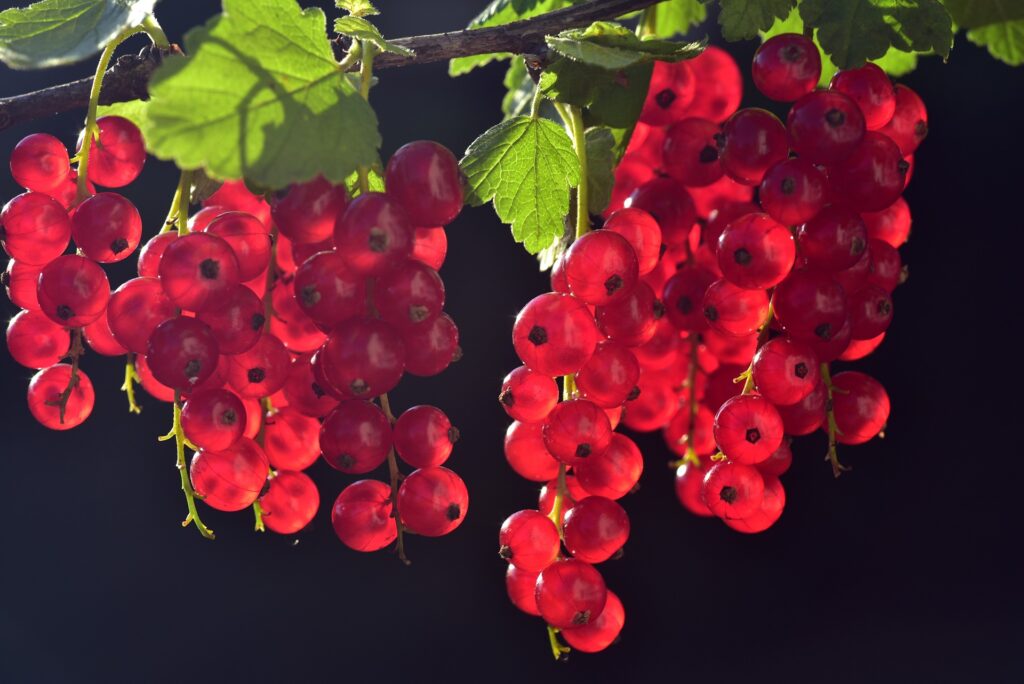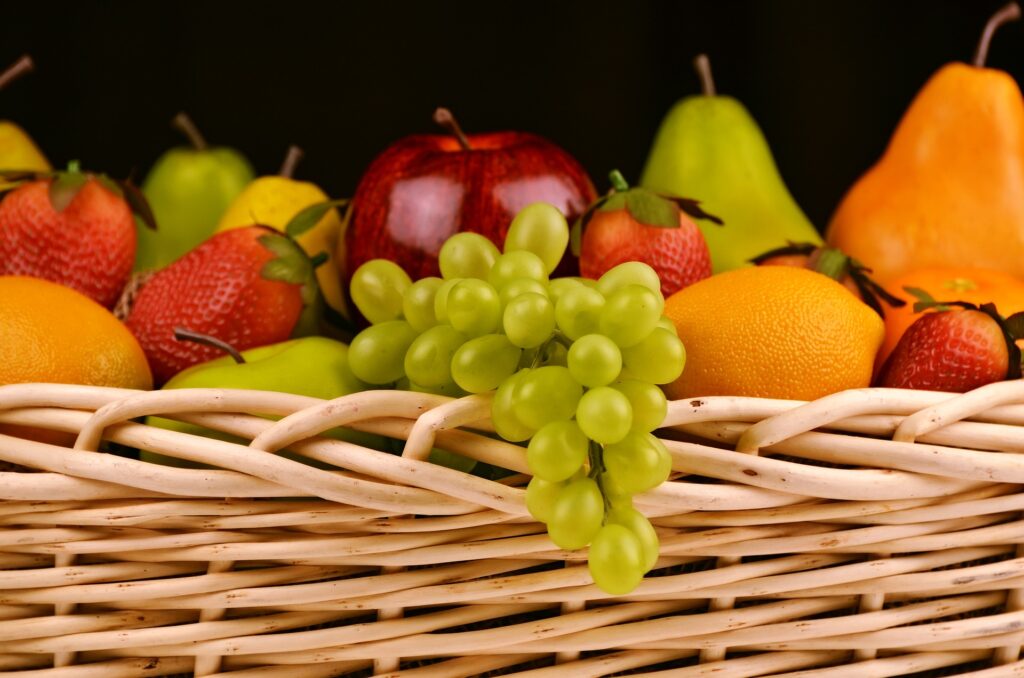Many smaller fruit possibilities are excellent houseplants if you want to learn how to cultivate your own.
Large fruit trees may not be feasible to grow indoors, but many smaller fruit species make wonderful houseplants.
Even without an outside area, you may have fresh fruit throughout the year with little maintenance.
Even though indoor fruit trees are frequently smaller versions of their outside counterparts, they can nonetheless bear fruit!
Although they need a little more labor to establish and maintain than most houseplants, indoor fruit trees are well worth the effort.
Blackberries, raspberries, and blueberries may all be grown indoors as alternatives to indoor fruit trees with the right care. These plants need a lot of moist soil and bright light in order to grow well indoors.
If you’re determined to grow fruit indoors, fig or olive trees are great options because they require less pollination from bees.
Fruit plants, like strawberries and grapes, grow well in hanging baskets and are a great way to conserve space.
Regardless of the type of fruit you choose to grow inside, do your homework so that you are aware of the specific needs of the plant or fruit tree you have chosen.
How Much Light Is Necessary for Indoor Fruit Trees?
Naturally, everything is dependent on the indoor trees you are cultivating. The majority of plants require bright light throughout the day, although this isn’t always the case, and there may be times when the sky is overcast.
However, unless you cover them, growing fruit trees outdoors can expose them to frost damage.Rather, you ought to place your fruit trees in the most sunny spot possible. Both conservatories and open-plan kitchens are fantastic. For example, citrus fruit plants require eight to twelve hours of sunlight per day on average.
Artificial Lighting for Fruit Production Indoors.
You may believe that the only way to provide your plants with adequate light is to grow them in a sunny area. However, because of the frequent cloud cover we get in the UK, this can be challenging.
On the other hand, fruit trees and plants can be grown indoors, even in areas lacking natural light. You may grow healthy crops and trees without direct sunlight by using artificial fluorescent lights, which generate enough UV light to encourage photosynthesis.
Ideal Soil for Household Trees
Because apple and cherry trees thrive in our climate, tropical citrus plants are typically found inside the United States. Therefore, it’s important to focus only on the soil that citrus trees need.
It should come as no surprise that citrus trees need somewhat acidic soil to thrive. To make your own acidic compost, add some acidic materials (like coffee grounds and pine needles) to your wormery or compost bin.

Fruit trees produce when?
I don’t anticipate harvesting any edible fruit from it very soon. Actually, it will take years for you to see any results. For instance, an apple tree won’t begin to produce fruit until it is between four and five years old.
Additionally, the fruits they yield in their younger years are probably of very low quality. An apple tree will typically produce two bushels of apples annually, though this will vary depending on the particular tree and its surroundings.
The Top 9 Fruit Plants for Indoor Growth.
Particularly in the UK, many varieties of fruit trees are ideal for indoor cultivation. But each will need varied amounts of sunlight, watering, and food, along with varying degrees of care. We’ve compiled a list of the top 9 easiest indoor fruit plants for your house, along with maintenance advice, to help you with this.
Meyer lemon trees.
It’s claimed that this interesting tree is the offspring of an orange and a lemon tree crossed together. Because of this, lemons are now round and more like oranges in shape. You can get some tasty fruits from the Meyer Lemon Tree if you give it the proper care.
When it comes to maintenance, these trees need a lot of irrigation and frequent sopping of the soil. To prevent the soil from getting overly wet, you also need to make sure that water can pass through it with ease.
Lime Tree.
These stunning green fruits are the ideal complement to your inside plant life. This should be your first concern because they grow extremely well both indoors and in a pot. Naturally, there are a few considerations to make when attempting to cultivate a lime tree.
Lime trees need to be kept warm and receive plenty of water, just like Meyer lemons do. Lime trees need a lot of food as well, so make sure to continue giving them high-quality fertilizer that is high in nitrogen. If you do this, they should thrive.
Tiny Bananas.
Because they need a lot of sunshine to thrive, these are a little harder to cultivate successfully. It’s ideal if you have an area indoors that receives nearly continuous sunlight during the day.
Sadly, it’s not common to locate an area indoors with that much natural light. On the other hand, you may equip the area with a UV light that you may activate when the area becomes shaded. Other than that, with the right care, these plants can thrive outside.
Avocado.
Since avocado trees can reach heights of more than 20 meters, it’s wise to select one of the numerous smaller kinds for indoor cultivation. Additionally, you should make sure that these trees don’t get too chilly.
You can plant an avocado from seed, but keep in mind that getting the avocado stone to germinate could take some effort. Still, it’s far less expensive than purchasing the tree whole, and an avocado tree in growth makes a lovely houseplant.
Tree of Apricots.
For indoor fruit plants, a dwarf apricot tree like the Goldcot is a gorgeous option. It can look excellent in a bright environment with its vivid green leaves and lovely, warm golden fruit.
Although these trees start to provide fruit in their second year of growth, a sufficient crop won’t be available until the fourth or fifth year. Like any fruit tree, patience is a virtue.
Pecans.
The peach tree is a fantastic option for an interior fruit tree. Peaches look a lot like apricots, but they have a very different flavor. They make a great addition to your fruit bushes.
Peaches come in a wide variety of species, and like any other fruit tree, you should think about growing a dwarf type inside so that it doesn’t get too huge and can concentrate its energy on fruiting. Peregrine and Golden Glory are two excellent dwarf peach tree options.
Figs.
This is one tree that would be difficult to cultivate indoors because of its large reach. It is most commonly seen outside. These trees require an enormous quantity of sunlight; however, it’s not impossible.
The fig tree, which is native to Asiatic Turkey, needs sunlight every hour to survive. They are an excellent option for covering a patio area or for supporting climbing plants because of their somewhat vine-like behavior as they meander up trellises and pergolas.
Trees of Oranges.
The common orange, like other citrus plants, thrives inside as long as it receives lots of sunlight and the temperature remains at or above 18 °C.
Satsuma oranges are an excellent kind to grow indoors because of their intense fragrance, which fills the room with a lovely aroma. In the summer, you may even bring them outside, and they will adore it.
Tree of Passion Fruit.
These vine plants are excellent indoor plants, particularly if you plan to grow them up a wall with garden rope linked to a trellis. These plants are excellent if you have limited space due to their verticality.
Passionflowers come in many different species, but only some bear the delicious fruits. The most well-known of these fruit plants is Passiflora edulis, which yields vivid purple fruits with yellow seeds that are both delicious and sour.
The lesson from this is that you may choose from an amazing array of fruit trees for indoor use, many of which are tropical kinds that thrive very well in the UK.
It’s crucial to keep in mind that all of these trees need attention and care both during the day and at night to make sure they stay warm, receive appropriate water, and get enough sunlight to grow healthily. To provide the greatest maintenance, find out what each particular tree needs.
FAQs
Is it possible to cultivate fruit in bottles?
This is something you can accomplish, but it will take time and careful attention to get it done properly. People do this in order to make visually stunning drinks—usually made with alcohol—that contain whole fruits. This raises a lot of issues about how in the world it got in there.
When is the best time to grow fruit indoors?
Recall that you can bring indoor fruit trees in pots, although this is best done in the winter months. You should think about growing them indoors as well if your garden doesn’t receive a lot of light or warmth, but some rooms in your home do.
How often should I water my fruit trees indoors?
Since they won’t benefit from the rain, indoor fruit trees should require more watering than outdoor ones. During the summer, water them once a week; in the winter, water them every 14 to 20 days. Water them every 8 to 12 days in the spring and fall.
Is it simpler to plant or purchase an indoor fruit tree?
Purchasing an indoor fruit tree is a far simpler option than planting one. Having said that, knowing that you created everything from scratch might be far more satisfying. It can be difficult to plant fruit trees correctly, and there’s no assurance that any of your seedlings will make it.
